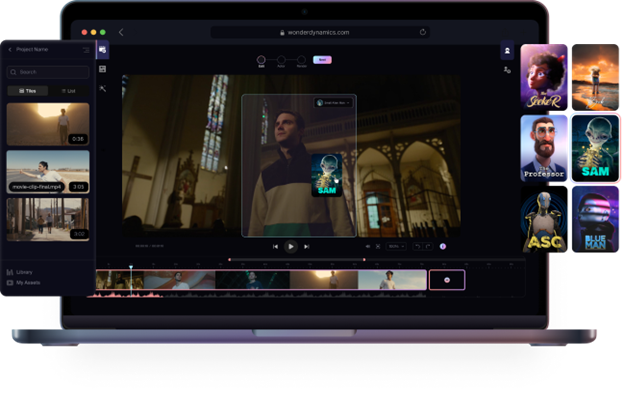Autodesk announced its recent acquisition of Wonder Dynamics, cloud-based 3D animation and VFX software that enables users to easily replace video footage of an actor with a CG character and then automatically apply the actor’s actions to it, along with lighting and camera movement in a shot or scene. The plug-in works with traditional content creation software such as Autodesk’s Maya, where animators can tweak the results if desired. The software makes it easy for users of all experience levels to create VFX and animation, further democratizing the process.
What do we think? Autodesk’s Maya and 3ds Max are standards in the M&E industry when it comes to professional content creation. But not everyone has the time to learn these extensive software packages. With the acquisition, Autodesk is extending the company’s reach to a new set of creators, while still adhering to high-quality results. Also, the move further extends Autodesk’s goal of connecting teams, data, and processes. In the M&E industry, that is being done with the Flow industry cloud, and the fruits of this acquisition appear to fit with that strategy, giving non-traditional animators (as well as traditional animators) the ability to step into this world with a fast, easy-to-learn solution at a low price point.
Autodesk acquires Wonder Dynamics
Autodesk has taken yet another step to build up its AI arsenal, and to provide tools for a wider range of users in the animation industry. This one comes as an acquisition of Wonder Dynamics, whose Wonder Studio is an AI tool that automatically animates, lights, and composes a CG character into a live-action scene.
It’s easy to see the appeal of Wonder Dynamics’ software, a cloud-based 3D animation and VFX tool that melds AI with popular DCC software. Wonder Dynamics bills it as a “VFX studio in your browser.” Users assign (drag and drop) their CG character to a live actor in a scene, and the system uses AI to automatically detect and track the actor’s performance based on single-camera footage. It then transfers the actor’s performance to your CG character, and the character becomes the actor, mimicking their movements. This is then propagated throughout the footage. The system analyzes everything from body motion, lighting, compositing, camera motion, and even the actor’s facial performance, resulting in a character that is automatically animated, lit, and composited.

Alongside rendered results, the software enables animators to export the individual layers they need to deliver their final visual effects shot. Artists have full control and can subsequently make detailed adjustments as desired in 3D space.
According to Wonder Dynamics, the software can be used with artists’ existing pipelines. The company says the AI tool automates 80%–90% of objective VFX work and leaves the artists with the remaining subjective work, for which they can import the scene data into the software they already use, including Maya as well as Blender and Unreal Engine.
More creators will have the ability to add 3D animated characters to their projects without incurring a large learning curve because the software automates what is typically complex processes.
Autodesk says the acquisition supports its long-term missing to connect teams, data, and processes with Flow, its M&E industry cloud.
Nikola Todorovic, co-founder and CEO of Wonder Dynamics, says: “The current misconception is that AI is a one-click solution, and that’s why we are excited to join a company that, at its core, supports the iterative nature of 3D and storytelling. We put a lot of effort into building an AI tool that does not replace artists, but rather speeds up creative workflows, makes things more efficient, and helps productions save costs. We firmly believe that our alignment with Autodesk will only amplify that vision and further push the boundaries of ethical AI and emerging technology in Media & Entertainment.”
Terms of the deal were not disclosed.